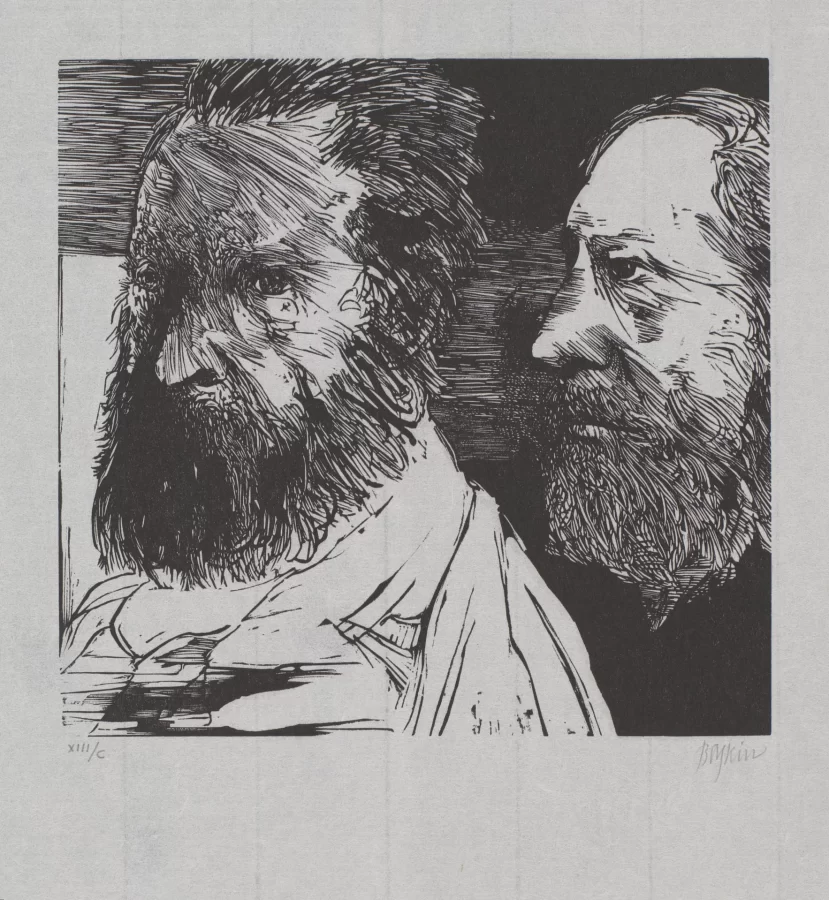Théodore Rousseau (French, 1812-1867)
Rousseau was a landscape painter who began his training under the academic painters of the Neoclassical school, but later created more romantic images that evoked a grave and melancholy atmosphere. He created contemplative and highly detailed paintings, driven by a lifelong love of nature and trees. Leonard Baskin seems to have taken his image of Rousseau and Millet from a relief sculpture by Henri Chapu (1833-1891) for a monument commemorating the principal founders of the Barbizon school–the influential movement that championed naturalism and realism–installed in Barbizon in the forest of Fontainebleau.
Rousseau’s work was received with mixed reviews throughout his lifetime–rejected later in his career due to his blatant disregard for conventional standards of composition and scale. In 2016, the J. Paul Getty Museum in Los Angeles opened the first major examination of his career, and his work today resides in the collections of the Louvre, Paris; Metropolitan Museum of Art, New York; the National Gallery of Art, Washington DC; and Hertford House, London.


